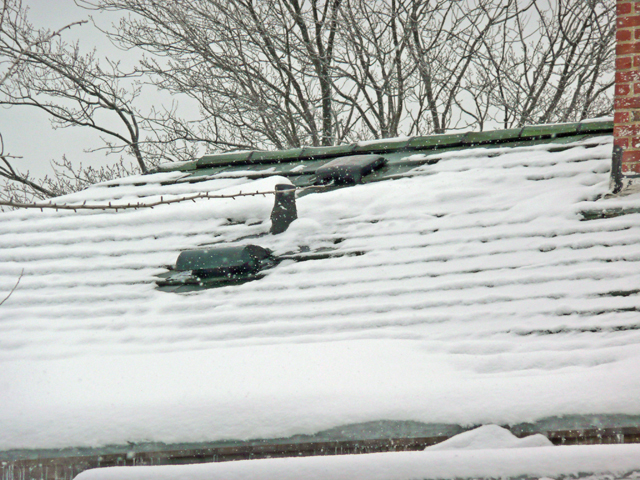
Real World Attic Ventilation
Real World Attic Ventilation
- Category: Attic Ventilation Help
- Written by Administrator
Attic and roof ventilation in the real world. How it works.
The pretty pictures and diagrams you see on the ventilation manufacturers websites are a far cry from everyday construction reality.
For instance, below is a photo taken in the middle of winter after a winter storm. About 12 inches of snow have have fallen in the past 4 days in this area. The roof is a hip style on a contemporary home near Cleveland, Ohio. The roofing material is Ludowici round butt Lanai flat tile with a weathered texture. The house is about 70 years old and has had annual ice dams in winter caused by poor insulation and inadequate attic / roof ventilation.
The interesting thing in this photo is how it shows what really happens when ridge vents are mixed with static (mushroom, turtle, etc.) vents on a roof for attic ventilation.
According to many roof ventilation manufacturers websites, the static vents should be removed to prevent a "short circuiting" of the ventilation airflow.
As seen below, heat is coming out of the attic from both the lower static vents and the ridge vent. The ridge vent here is a custom installation consisting of ventilation material over a hole cut in the ridge roof boards which was then covered by the roof tile.
There is melting snow all along the sides of the ridge and around the lower roof vents.
If there were any "short circuiting" of the ventilation system, the area around the lower vents would be dry and either covered with snow or there would be a drift of snow entering the vent opening. The additional ventilation lower on this roof is helping to exhaust the attic heat and not reducing it's effectiveness.



